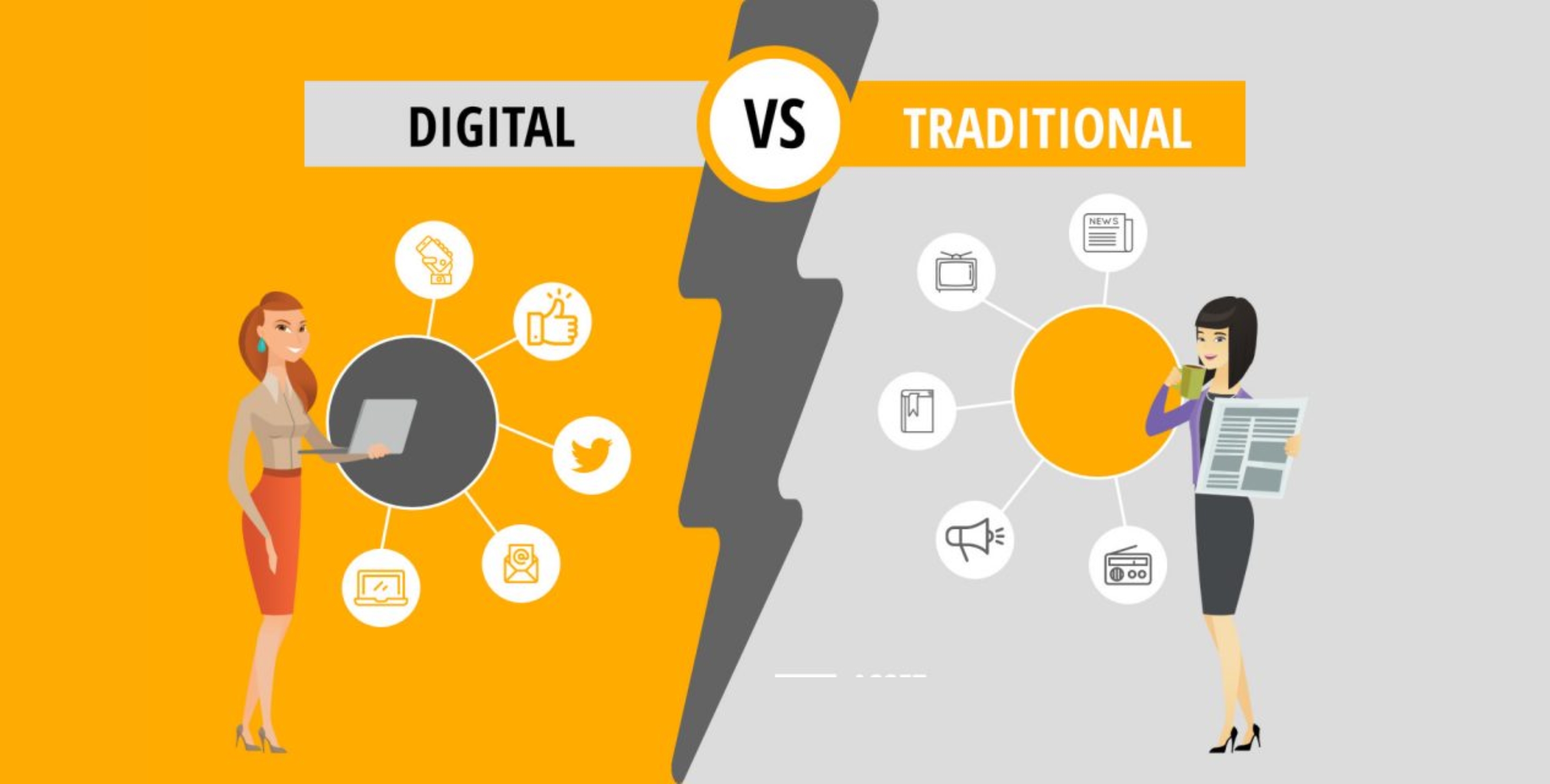Is It Time to Abandon Traditional Marketing or Blend It with Digital Marketing?
Should businesses transition entirely to digital marketing, or does traditional marketing still hold relevance in today’s fast-paced world? This question is especially pertinent when we see successful digital campaigns by brands like Zomato and Tanishq or topical posts from traditional players like Amul that generate online buzz.
According to a Nielsen study, 86% of Indians trust newspaper advertisements, showing the lasting influence of traditional media. Simultaneously, 80% of consumers conduct online research before purchasing a product, highlighting the dominance of digital platforms. The debate between traditional marketing vs. digital marketing is far from over.
Let’s explore their relevance in detail.
Table of Contents
- Why Traditional Marketing Still Matters
- Challenges of Traditional Marketing
- How Digital Marketing Addresses Traditional Marketing Challenges
- Combining Traditional and Digital Marketing: A Case Study
- Conclusion
Why Traditional Marketing Still Matters
Traditional marketing involves print ads, TV commercials, radio spots, billboards, and direct mail—tried-and-tested methods that have been effective for decades. These methods remain highly relevant, especially in markets like India, where TV alone reaches over 200 million households.
1. Expansive Reach
Traditional marketing offers unparalleled reach, especially among demographics less active online. For example:
- According to a survey by the Advertising Standards Council of India (ASCI), 83% of people trust TV ads over digital ads. This trust can significantly influence purchasing decisions. Ads placed during high-profile TV shows or sporting events, like an IPL match, can connect with millions of households.
- Full-page newspaper ads in top publications like The Times of India continue to capture the attention of diverse audiences.
2. Emotional Resonance
Traditional marketing engages multiple senses, creating a deeper emotional impact.
- Iconic campaigns like Surf Excel’s “Daag Ache Hain” or Nirma’s catchy jingle “Washing Powder Nirma” remain etched in public memory.
- Visuals, sound, and storytelling in traditional advertising evoke a level of nostalgia and trust that digital ads often struggle to replicate.
Challenges of Traditional Marketing


While traditional marketing has its strengths, it faces notable limitations that can hinder its effectiveness.
1. High Costs
Running a TV or newspaper ad can be prohibitively expensive, especially for small businesses.
- If you’re launching a new product or service, focus on generating inquiries and sign-ups.
- For ongoing campaigns, prioritize collecting contact information or booking demos.
Tie your objectives to actionable KPIs like:
- Form submissions or newsletter sign-ups.
- Cost-per-lead (CPL) and click-through rates (CTR).
- Conversion rates from social ads.
2. Know Your Audience
Effective lead generation starts with understanding who you’re targeting. Go beyond basic demographics to uncover psychographics, preferences, and digital behavior.
- Use tools like Meta Audience Insights or LinkedIn Analytics to segment audiences.
- Conduct surveys or analyze comments on competitor posts to understand pain points.
3. Create Content That Resonates
Your content should add value to your audience’s journey. Some effective content types for lead generation include:
- Educational Content: Share tips, how-to guides, or explainer videos to address customer pain points.
- Case Studies and Success Stories: Highlight real-life examples of how your product or service solved a problem.
- Interactive Content: Use polls, quizzes, or contests to engage users and collect leads.
- Downloadable Resources: Offer free eBooks, whitepapers, or templates in exchange for email sign-ups.
4. Engage and Interact
Lead generation isn’t just about attracting users; it’s also about building relationships. Here’s how:
- Respond promptly to comments and messages.
- Host live Q&A sessions to address customer queries in real-time.
- Share user-generated content or testimonials to foster community trust.
5. Use Ads Strategically
Organic reach alone isn’t enough to generate significant leads. Paid ads allow you to target specific audiences effectively. For example:
- Awareness Campaigns: Use Instagram stories or Facebook carousel ads to introduce your product or service.
- Retargeting Ads: Highlight real-life examples of how your product or service solved a problem.
- Interactive Content: Re-engage users who visited your website but didn’t convert.
- Lead Forms: Utilize LinkedIn or Facebook’s built-in lead generation forms to collect information easily.
During key seasons, such as a product launch or festive period, focus on ads with compelling calls-to-action (CTAs) like “Download Your Free Guide” or “Book a Free Demo Now.”
6. Track, Optimize, and Improve
Monitor the performance of your campaigns using tools like Google Analytics, Hootsuite, or Meta Insights. Pay attention to:
- Engagement metrics (likes, shares, and comments).
- Lead conversion rates.
- Cost-effectiveness of ad spend.
If a campaign isn’t delivering results, experiment with different formats, platforms, or messaging. For instance, if static images underperform, switch to video or carousel posts.
Conclusion
Social media marketing for lead generation is about more than just posting content; it’s about understanding your audience, engaging them meaningfully, and driving them toward conversion. By combining a solid strategy with creativity and consistent optimization, you can turn social media into a powerful lead generation machine.
If you apply these principles and adapt them to your business’s unique needs, you’re on the path to success.
Good luck!







